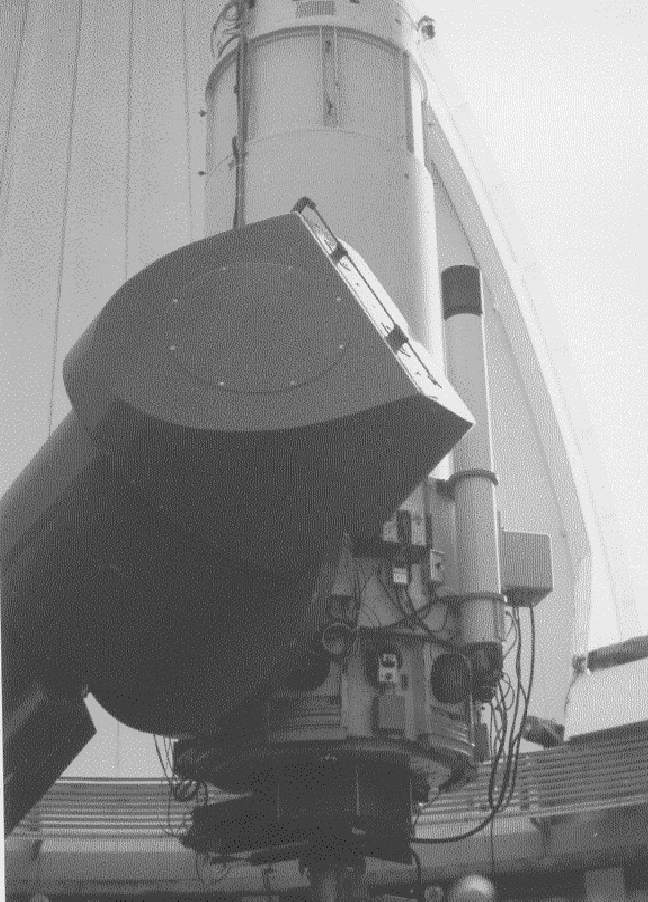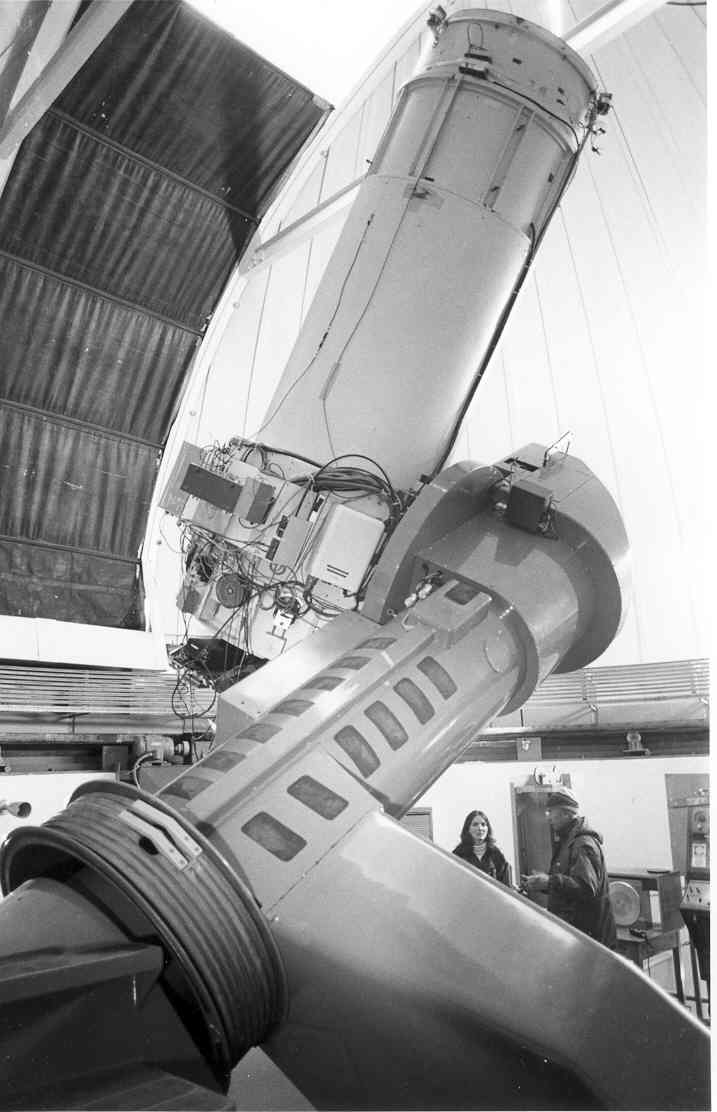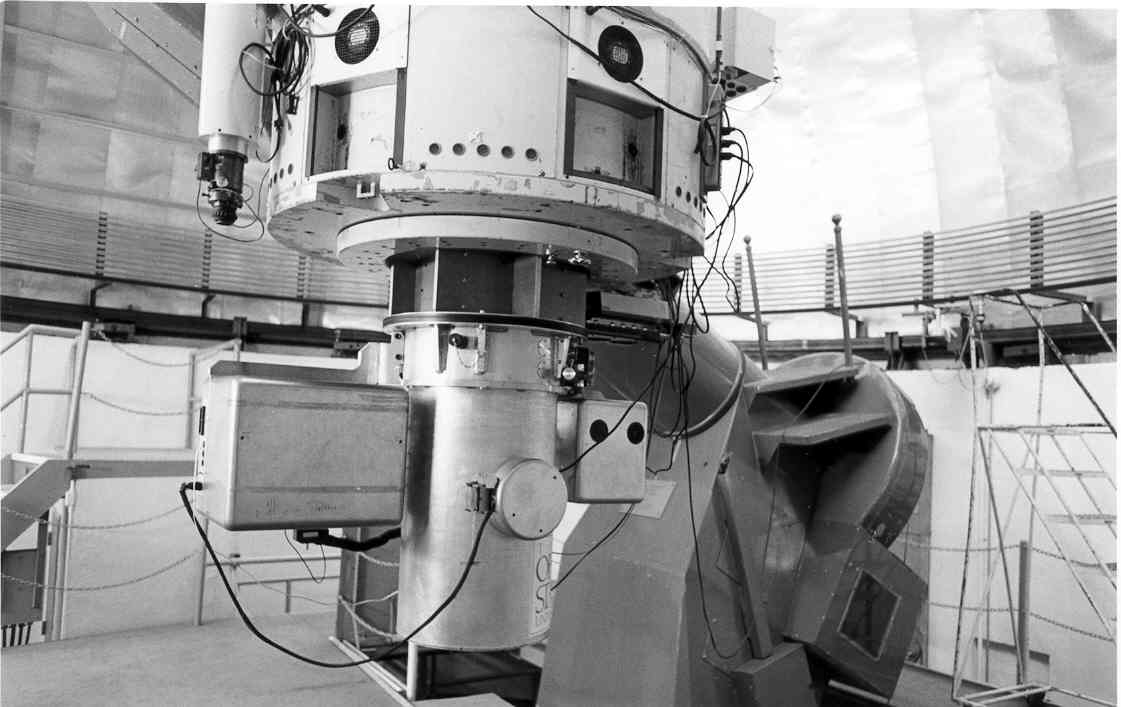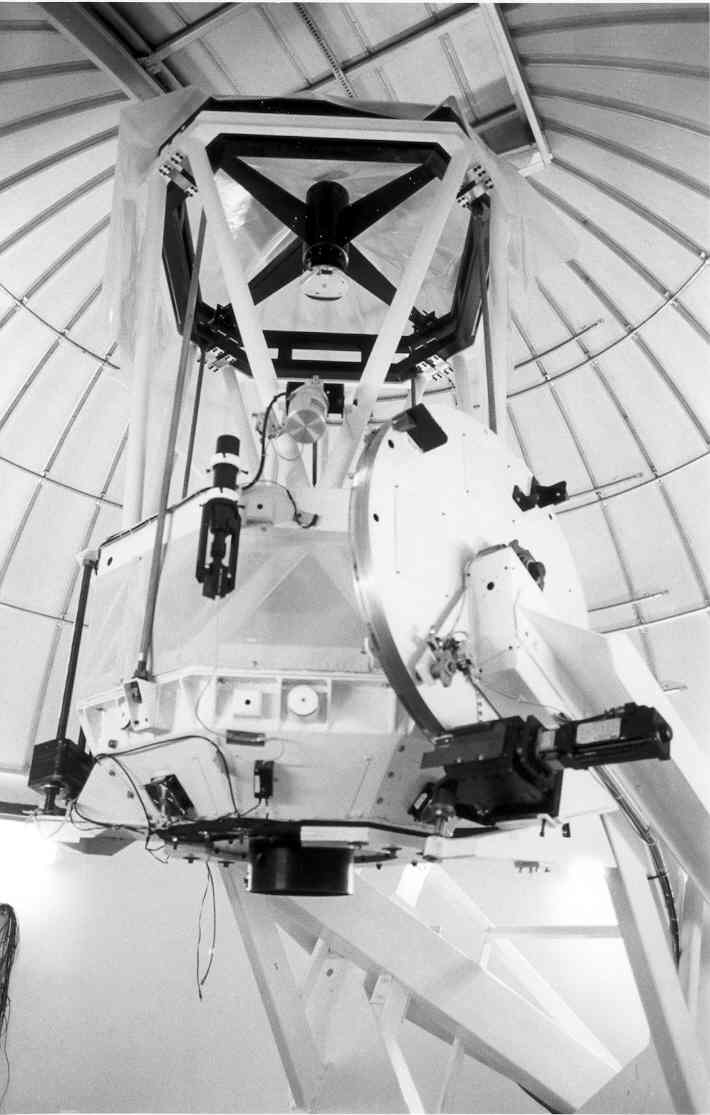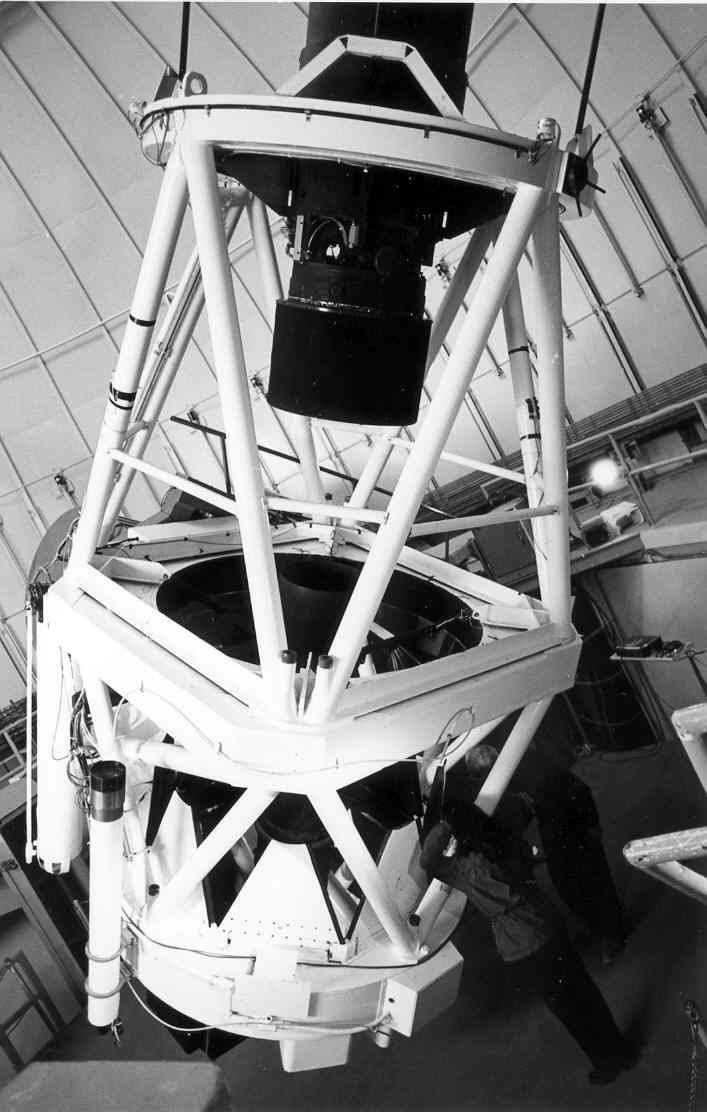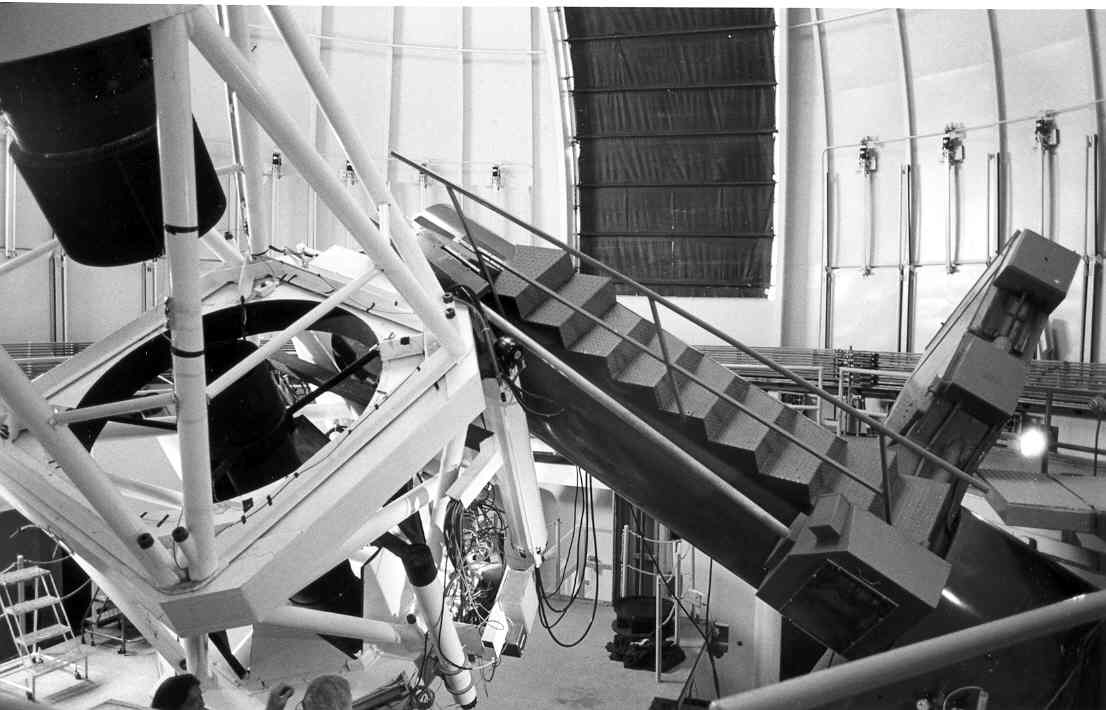SMARTS Telescopes' Histories
The SMARTS 0.9-meter telescope (also called the 36" telescope) has a single-arm equatorial mount and was constructed in 1965 by Boller and Chivens. It is a closed-tube Cassegrain design and is currently equipped with a visible-light camera having a 2K CCD. It has found a great deal of use as a stable photometric and astrometric instrument and has proven to be a reliable and durable telescope. As of August 2020, it is operated in classical mode and is an ideal facility for student training. Click here for more details of the history of the 0.9m.
The Yale 1.0-meter telescope, originally sited in Bethany, CT, was moved to CTIO in 1972. Between 1998 and 2002 it was run by the YALO Consortium. The 1.0m has a very similar design to the 0.9m in optics and mounting. As pictured, the 1.0m sports the ANDICAM, which was later moved to the SMARTS1.3-meter telescope. As of August 2020, it is operated in robotic mode with an optical imaging camera.
The SMARTS 1.3-meter telescope, formerly the southern-hemisphere 2MASS survey telescope, is a much more modern design than the other SMARTS telescopes, using a split-ring altitude-azimuth mount and an optical design optimized for work in the infrared. It fits very neatly into its dome. Here it is shown without the ANDICAM optical/infrared imager. As of August 2020, it is closed, awaiting its next incarnation.
The SMARTS 1.5-meter telescope (also called the 60-inch telescope) is an open-tube Cassegrain on a single-arm equatorial mount. It has been operated with both imagers and spectrographs, and the option of two secondaries giving f/13.5 and f/8. As of August 2020, it is operated with a single instrument, the high-resolution optical spectrograph CHIRON. The facility is run full time, primarily with CTIO staff as observers.
Updated on July 7, 2021, 6:58 pm
